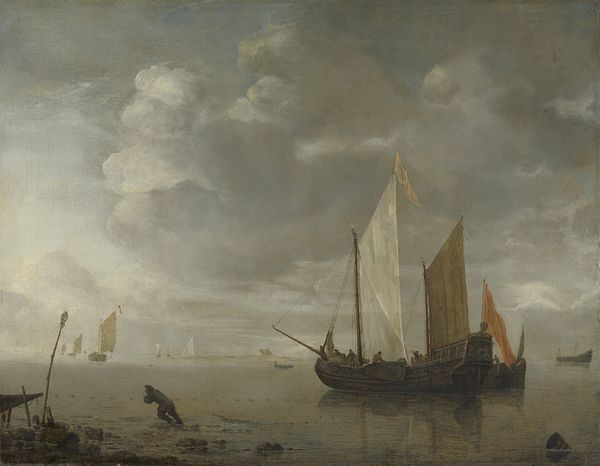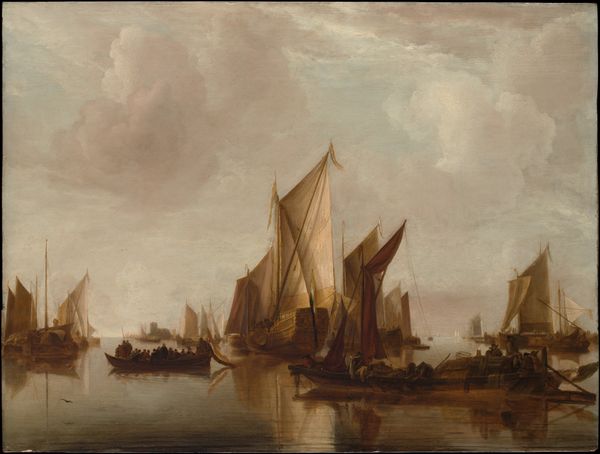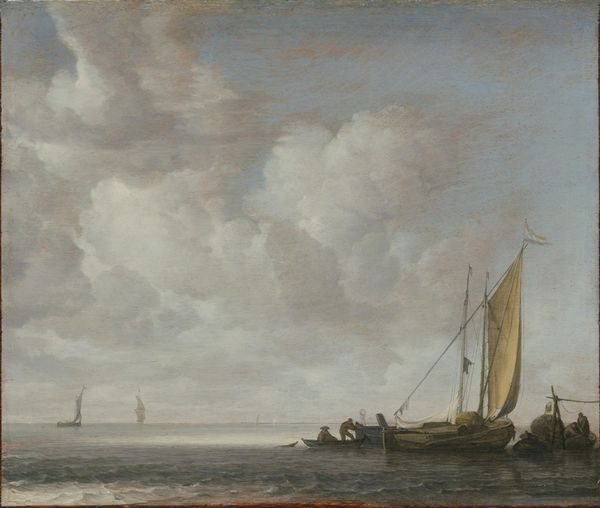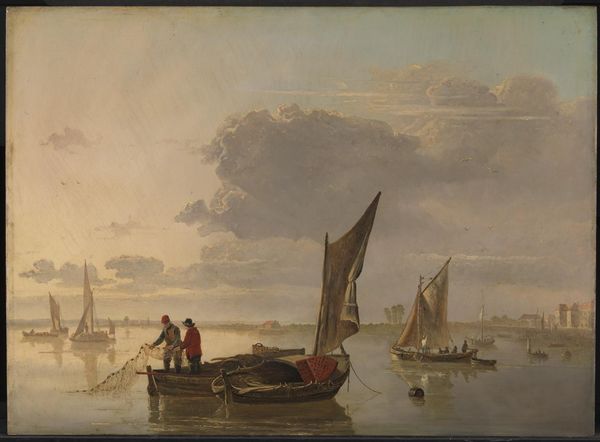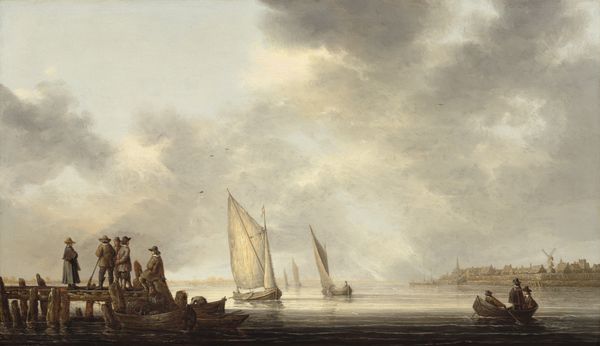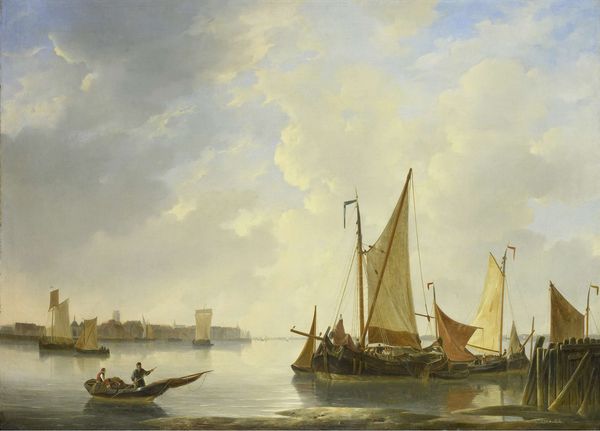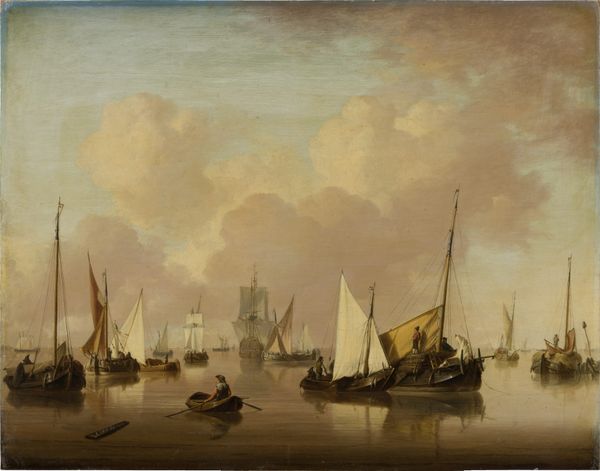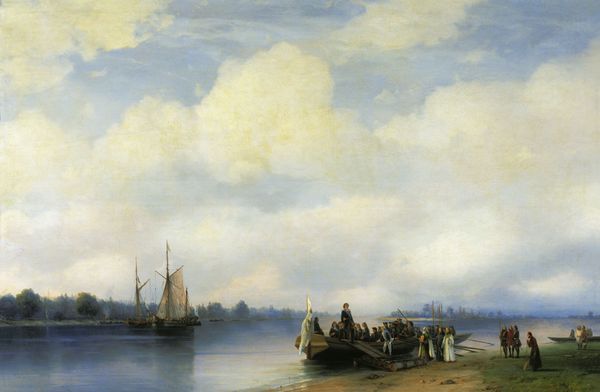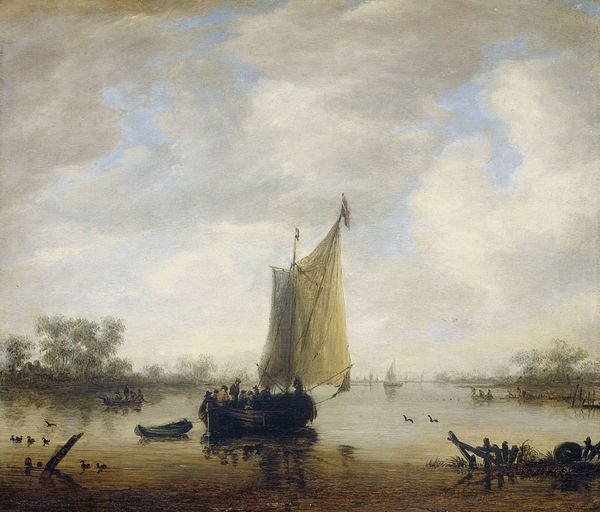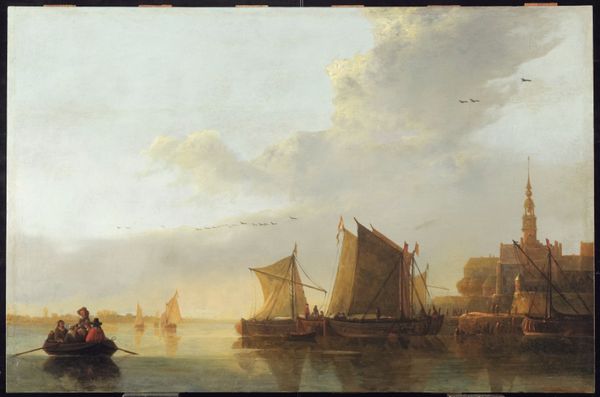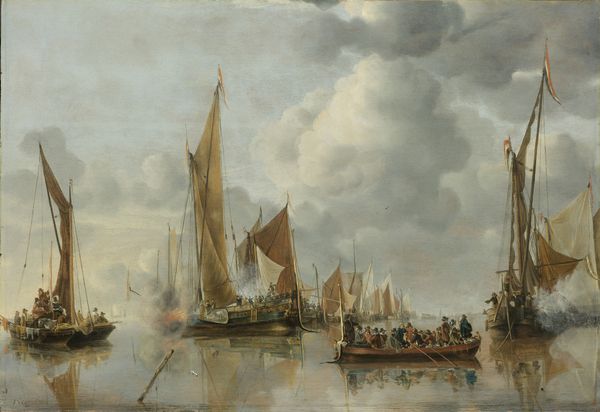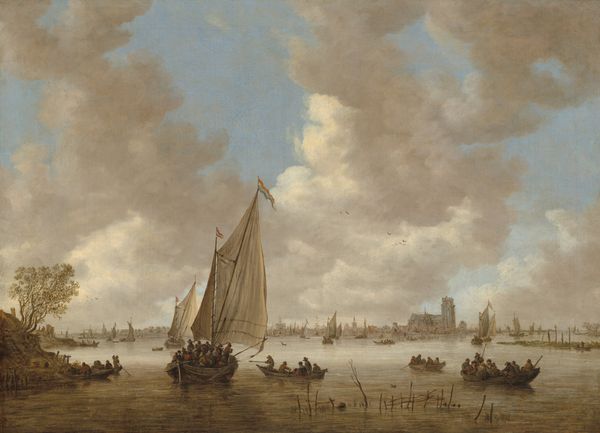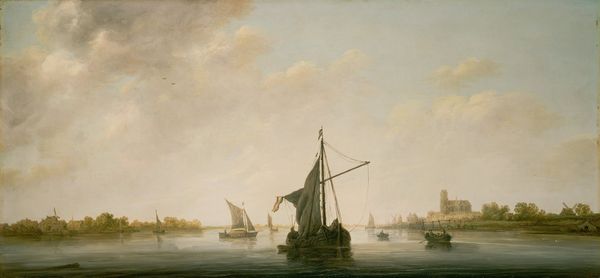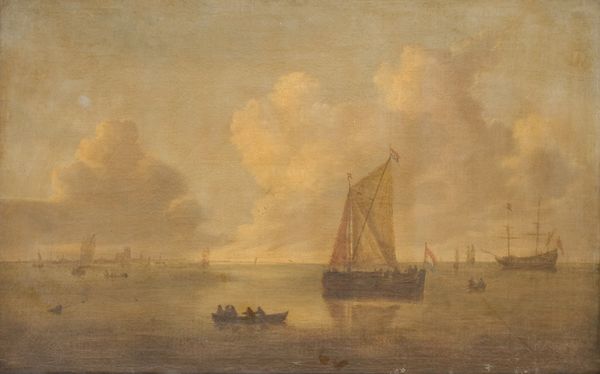
plein-air, oil-paint
#
boat
#
baroque
#
dutch-golden-age
#
plein-air
#
oil-paint
#
landscape
#
oil painting
#
cityscape
#
realism
Dimensions: 40.5 x 55.5 x min. 0.6 cm
Copyright: Public Domain
Curator: Jan van Goyen painted "Haarlem Sea" in 1656, capturing a Dutch cityscape in oil on panel. The scene is dominated by the vast expanse of the water and sky. Editor: It's a study in gray and brown tonalities, a very subdued palette. The eye is really drawn into the misty distance, isn't it? You can almost smell the salt air. Curator: Van Goyen was a master of capturing the Dutch atmosphere. Note how he minimizes the human figure, and instead prioritizes nature's grandeur, reducing those laboring along the shoreline to barely a notation of form, a part of the wider ecology. This certainly aligns with landscape painting traditions rooted in representing power dynamics. The emphasis is placed squarely on Haarlem, that cityscape fading hazily in the background. Editor: Absolutely. Consider the materials too - oil paint itself, manipulated to mimic light, atmosphere, and reflections. The textures he achieves are varied - see how he renders the choppy surface of the water in contrast with those soft clouds, and think of the painter meticulously grinding pigments with his own hands to find exactly the shades he was after. Curator: His technique reflects plein-air traditions, attempting to capture transient atmospheric effects through observation and swift brushwork, that feeling of a singular, quickly vanishing moment. In this painting, we find not only the visible landscape, but also an interpretation of societal relations shaped by both landscape and labour. Editor: Indeed. And the sea itself was a central facet of the Dutch economy, its mastery of maritime technology creating an environment for social relations. We must view van Goyen’s brushwork not just as mimetic craft but also the artistic output that captures its moment and historical location, to show it working in relation to an active mode of resource acquisition. Curator: What lingers with me is this constant negotiation: The people are there, as are the tools with which to subsist, and so too the industry from the distance-- all of which serve only to support a representation of the landscape, and how powerful a subject it can truly be. Editor: I agree; and for me it speaks to the slow and continuous activity, labor, craft. To observe "Haarlem Sea" is to appreciate materiality itself--van Goyen’s art becomes an important and accessible demonstration of his technical labor within a larger economic machine.
Comments
stadelmuseum about 2 years ago
⋮
The native landscape was the most popular pictorial theme in seventeenth-century Holland. The Netherlands had become an independent economic world power, and its self-confident citizens and merchants wanted motifs that had not been adopted from Italian painting. Van Goyen complied ‒ more than 1,200 times. In addition to their rapid and superb execution, his works were also affordably priced. The landscapes are dramatically staged. Owing to the high demand, the artist had no trouble selling them. They did not make him rich, though; he worked as an auctioneer, speculated in tulip bulbs and dealt in real estate. Incidentally, if we were to stand on the same spot today, we would be looking at Schiphol Airport.
Join the conversation
Join millions of artists and users on Artera today and experience the ultimate creative platform.
